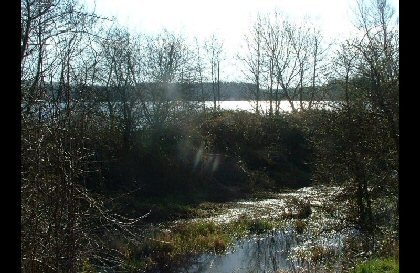Oral tradition in South Armagh holds fast to the folk memory of the seventeenth century local character,
Whether that is the reality or not will never be known, for the truth is that we know very little about him, and the little we know comes mainly from the pens of his sworn enemies. Far fewer of the native Irish were literate and those who were had great difficulty in having their works widely accepted. So it happens that our chief source on the life and deeds of Redmond O’Hanlon is an anonymous pamphlet from shortly after his time, entitled, ‘The life and death of the Incomparable Tory, Count Redmond O’Hanlon’.
It is always unacceptable if an historical piece is unattributed: what need is there for accuracy if one is not made accountable for one’s words? Indeed the above title alone is both inaccurate and deliberately sensationalist and partial. O’Hanlon was never made a Count – an English title – and the term Tory was, and was intended to be, insulting (the reason it was later applied to members of the Conservative Party) and the equivalent of today’s ‘Bandit’ – as in ‘Bandit Country’.
To come to some understanding, we must look to earlier history.
The first mention of the name O’Hanlon (Ui Anluain) was in the first millennium, in the year 938 in the Annals of the Four Masters. Two centuries later the O’Hanlon chief had established himself as Lord of O’Neillland (north
Also, however, by this time the ‘English’ or ‘Normans’ had arrived (at first at McMurrough’s invitation!). By 1442 the O’Hanlon chieftain had submitted to the English Viceroy. Incidentally this was fifty years before
Gradually rule through the auspices of the former owners was no longer acceptable to the English and later generations of O’Hanlons were ousted from their positions. Those who resisted and were defeated were especially punished. When Henry VIII decided to seize the wealth and property of the Church in pretence at Reform, the ancient convent of St Moninna at Killeavy was among those taken. By then it was a retreat for holy women. The last Abbess of the monastery was named O’Hanlon.
Shortly after this (two decades later) the O’Hanlons sided with Shane O’Neill in his insurgency against the Crown. By 1569 most of the O’Hanlon land had been seized by the Crown and redistributed (or ‘granted’) to one Thomas Chatterton. In return he was to ‘subdue the natives’ on the property. He failed and the land was taken back by the Crown. The O’Hanlon head could see the writing on the wall. In the final two decades of that ill-fated century The O’Hanlon (‘Sir’ Eochaidh O’Hanlon) made a series of submissions and was re-granted his lands on the condition of ‘loyalty’.
But Hugh O’Neill’s Nine Year War was beginning. From time to time, Eochaidh was to side with one group or the other (O’Neill or Bagenal) as suited his temporary interests. One Turlough O’Hanlon fought on O’Neill’s side at the
There would be short shrift for the O’Hanlons in the ‘settlement’ that followed the defeat of ‘The Earls’. By 1604 Sir Eochaidh, in serious financial difficulty, was selling off seven townlands near Newry. Four years later his son and heir, Eochaidh Og sided with the O’Dochery in his ill-fated 1608 Rebellion and the end was near. He was denied the succession and exiled to
The O’Hanlons were ousted and the
It is scarcely surprising therefore that the O’Hanlons joined in the 1641 rebellion, led locally by Phelim O’Neill. It is recorded that one Ardall O’Hanlon was injured while fighting for Owen Roe O’Neill at the Battle of Clones. They temporarily regained
By then, many of the former owners had taken to the roads in an attempt to exact some retribution. This became the age of the Tories, later referred to as Raparees. A Loughlin O’Hanlon of Killeavy is recorded as being sentenced to death in 1669 (a sentence later commuted) for stealing a horse.
The first appearance of Redmond O’Hanlon in history is recorded from 1674.
He was proclaimed as an outlaw and a reward of
